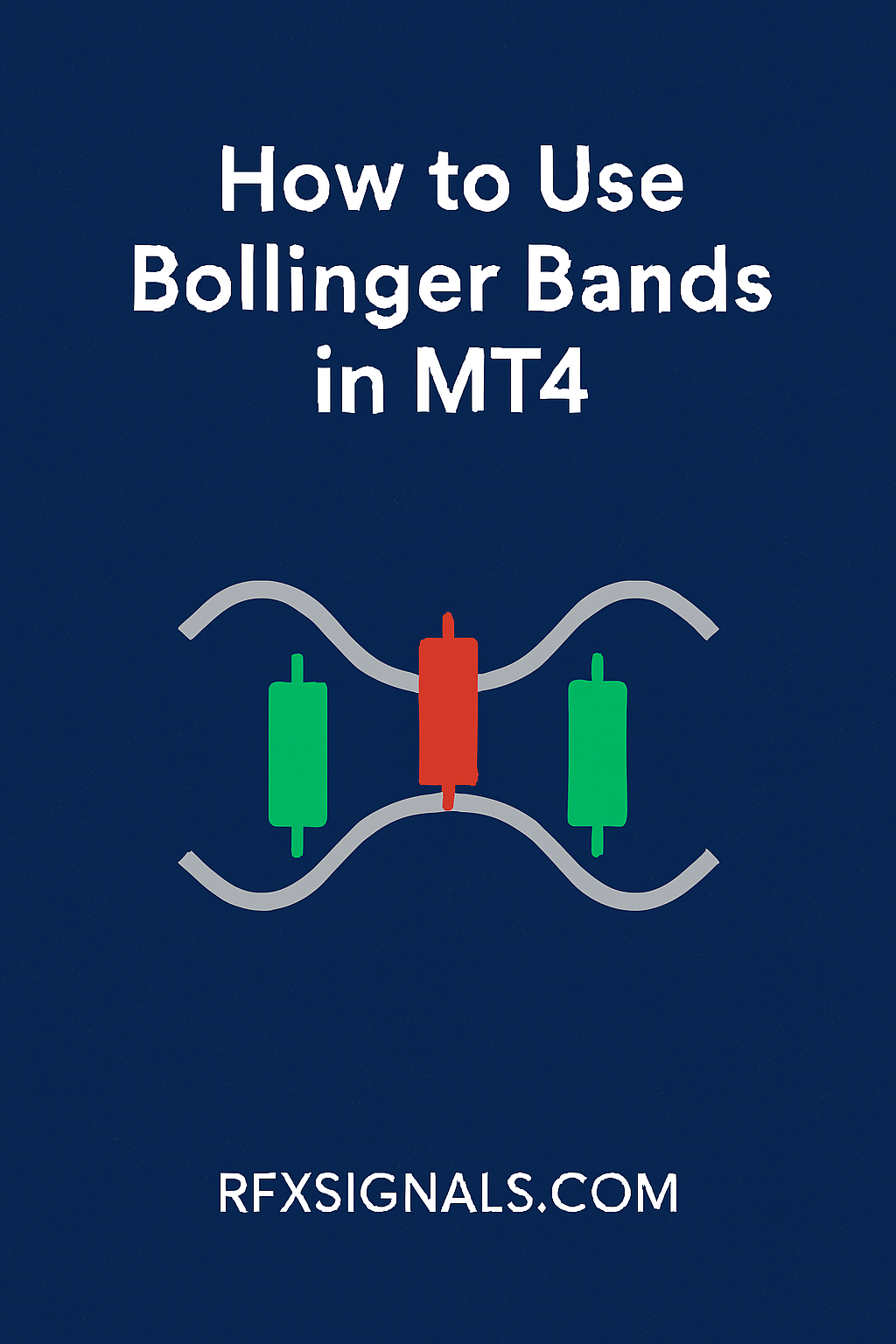
How to Use Bollinger Bands in MT4
Bollinger Bands are one of the most popular volatility indicators used by forex traders. Invented by John Bollinger in the 1980s, they consist of a simple moving average (middle band) and two standard deviation bands (upper and lower). On MetaTrader 4 (MT4), Bollinger Bands are built-in and easy to apply. This article explains practical ways to use them for entries, exits, and risk management.
Understanding the components
The Bollinger Bands indicator includes three lines:
- Middle band — typically a 20-period simple moving average (SMA)
- Upper band — middle band + (k * standard deviation)
- Lower band — middle band - (k * standard deviation)
How to add Bollinger Bands in MT4
Open MT4, go to Insert > Indicators > Trend > Bollinger Bands. Use the default period 20 and deviation 2 to start. You can customize colors and line widths for clarity. Save the setup as a template so you can reuse it across charts.
Common settings and variations
While the default (20,2) is standard, traders tweak settings depending on timeframe and strategy:
- Shorter period (10–15) — more responsive bands, more signals, but higher noise
- Longer period (30–50) — smoother bands, fewer signals, better for longer-term trades
- Deviation (1.5–2.5) — lower deviation tightens bands (more breakouts), higher deviation widens (fewer false breakouts)
Mean reversion vs breakout strategies
Bollinger Bands support two main approaches:
- Mean reversion — price tends to revert to the mean (middle band). Traders look to buy near the lower band and sell near the upper band, often combined with oscillators (RSI, Stochastic) to confirm oversold/overbought conditions.
- Breakout — strong trends often 'ride' the upper or lower band. A squeeze (narrow bands) followed by expansion often signals upcoming volatility. Traders enter on a breakout and use the middle band as a trailing stop or filter.
Practical entry rules (mean reversion)
Example rules for a mean reversion trade on H1/Daily:
- Wait for price to touch or slightly pierce the lower band.
- Confirm with RSI below 30 (or Stochastic in oversold region).
- Enter a long when a bullish candle closes inside/beyond the band and momentum turns positive.
- Place stop-loss a few pips below the recent low and target the middle band or upper band depending on reward-to-risk.
Practical entry rules (breakout)
Example breakout rules:
- Identify a 'squeeze' — bands compressing for several periods.
- Wait for price to close outside the band with increased volume or momentum confirmation.
- Enter on the breakout candle close or on a retest to the band.
- Use the middle band as initial trailing stop; target measured moves or ATR-based targets.
Using Bollinger Bands with other indicators
Bollinger Bands are stronger when combined with complementary indicators:
- RSI/Stochastic — confirm overbought/oversold conditions for mean reversion.
- ADX — gauge trend strength; avoid mean reversion when ADX shows a strong trend.
- Volume — breakout with rising volume is more reliable (volume indicators in MT4 or tick volume).
- ATR — use ATR to set stops and targets aligned with volatility.
Stops, position sizing & risk management
Never trade without defined stops. For mean reversion, stops should be tight (below swing low/high) because trades are countertrend. For breakouts, use wider stops since volatility may spike. Position size should be calculated using risk % per trade (e.g., 0.5–1% of account equity) and distance to stop-loss — use an MT4 position size calculator or spreadsheet.
Templates, alerts and automating on MT4
Save your Bollinger Bands setup as a chart template (Charts > Template > Save Template). Use MT4 alerts to notify when price crosses band levels (Alerts tab in Terminal) or add an indicator that pops up alerts. If you prefer automation, you can code a simple Expert Advisor (EA) that executes your confirmed Bollinger strategy — but always backtest thoroughly.
Common mistakes and how to avoid them
Avoid these pitfalls:
- Using bands alone: Bollinger Bands are not a magic indicator. Combine with momentum and volume filters.
- Forcing trades: Just because price touches a band doesn’t guarantee reversal — wait for confirmation.
- Ignoring timeframe alignment: Use higher timeframe bias to filter lower timeframe entries.
- Overfitting settings: Don’t optimize parameters to past data without forward-testing.
Backtesting and journaling
Backtest your Bollinger approach on historical data and log each trade in your journal. Track entry reason, stop, target, outcome, and notes. Measure win rate, average R, and expectancy. This objective approach separates lucky runs from a robust edge.
Example trade — step-by-step
Suppose EUR/USD H4 with BB(20,2): price squeezes for 8 bars, ATR falls, then a bullish candle closes above upper band with rising tick volume. Confirmation RSI crosses above 50. Entry: next candle open; stop: below breakout candle; target: 1.5–2x risk or middle band retest. Trail stop under middle band as price advances.
Quick tips
- Default BB(20,2) is a good starting point.
- Squeezes often precede volatility — be ready but patient.
- Use higher timeframe bias to avoid false breakouts.
Related reading
Conclusion
Bollinger Bands are versatile — useful for both mean reversion and breakout strategies. On MT4 they’re easy to set up and customize. The key to success is clear rules, confirmation from complementary indicators, disciplined risk management, and thorough backtesting.